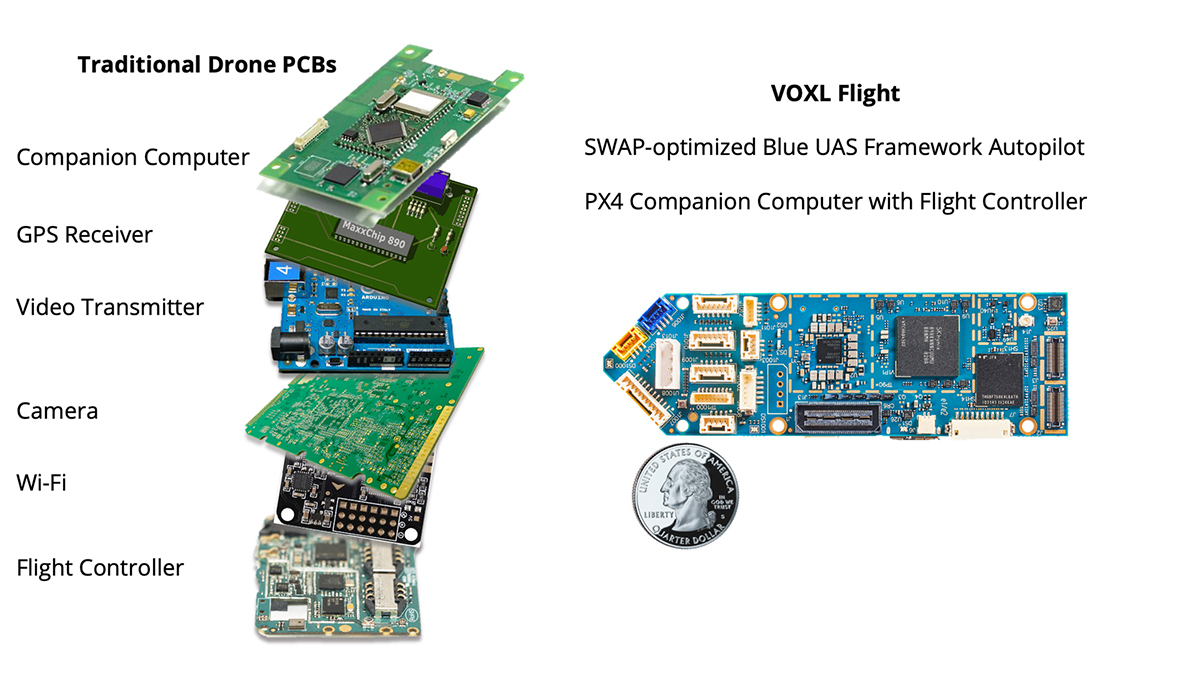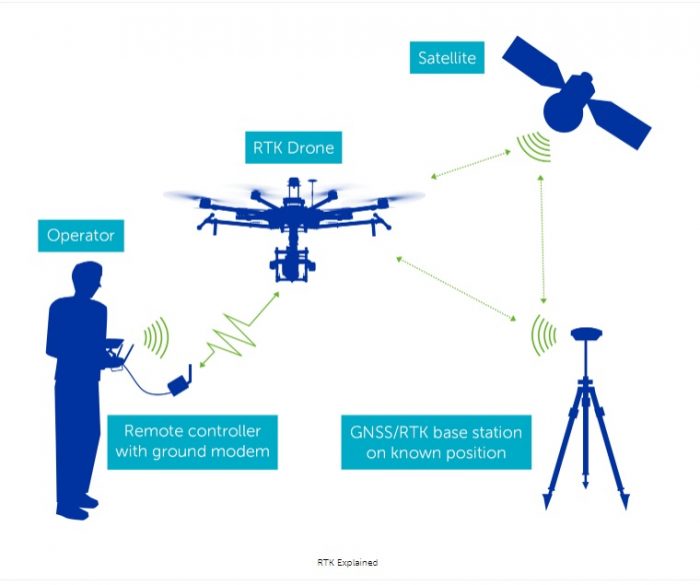SparkNavi Drone Flight Controller and GNSS/INS Made in Taiwan: Development for Professional UAVs
SparkNavi Drone Flight Controller and GNSS/INS Made in Taiwan: Development for Professional UAVs
Blog Article
Exploring the Function of Drone Trip Controllers in Enhancing Flight Security and Navigation Performance
The improvement of drone modern technology has actually considerably increased the significance of flight controllers, which work as the brain of these aerial vehicles. By integrating real-time data from an array of sensors, trip controllers improve trip stability and navigation effectiveness, ensuring that drones can operate smoothly also in complex environments. This conversation will certainly discover the essential parts that contribute to these renovations, along with the implications for the future of autonomous trip. What technologies lie ahead that could better change the abilities of drone trip controllers?

Understanding Flight Controllers
Flight controllers are essential elements in the performance of drones, functioning as the minds that support and take care of flight operations. These sophisticated gadgets procedure information from numerous sensors, including accelerometers, gyroscopes, and GPS, to make sure that the drone preserves its desired flight path. The trip controller interprets this data and carries out commands based on pre-defined formulas, allowing the drone to respond to ecological modifications, such as wind or obstacles.
The main function of a trip controller is to preserve security during trip. It attains this by making real-time changes to the drone's electric motors and control surfaces, making sure equilibrium and control. Additionally, modern trip controllers incorporate sophisticated attributes such as waypoint navigation, permitting for automated trip paths and improved functional effectiveness.
Comprehending the architecture of trip controllers is important for both specialists and hobbyists. They usually contain a microcontroller, firmware, and various user interfaces for sensing unit input and communication. As innovation breakthroughs, trip controllers have actually come to be a lot more qualified and compact, integrating expert system to enhance decision-making processes and adapt to complicated trip situations. This development represents an essential growth in the drone market, leading the way for much more sophisticated applications and safer operations.
Secret Parts of Trip Security
Achieving optimum trip security in drones relies on several key components that work in show to make certain smooth and controlled procedures. Central to this stability is the trip controller itself, which processes data from numerous sensing units to maintain the preferred flight mindset. This includes accelerometers and gyroscopes that determine activity and positioning, enabling real-time adjustments to the drone's placement.
An additional essential component is the electronic speed controllers (ESCs), which regulate the power supplied to the electric motors. By finely tuning electric motor speeds in response to trip controller commands, ESCs aid keep balance and combat disruptions triggered by wind or unexpected motions.
In addition, the style of the drone's framework plays a crucial role in trip stability. A well-structured framework decreases vibrations and improves the total wind resistant account, adding to smoother trip attributes. Finally, the integration of sophisticated algorithms within the flight controller aids in anticipating changes, making certain a receptive and adaptable flight experience.
With each other, these elements create a natural system that improves a drone's stability, permitting exact maneuvering and boosted performance in various flight conditions.
Navigating Performance Techniques
Performance in navigating is crucial for optimizing drone procedures, specifically in intricate settings. Reliable navigating techniques improve the ability of drones to pass through challenging terrains and prevent barriers, therefore enhancing functional performance and safety.
One noticeable technique is the application of advanced GPS and inertial dimension systems (IMUs) that provide specific place tracking and orientation data. These technologies enable drones to calculate ideal trip paths in real-time, considering various elements such as wind problems and potential barriers.
An additional method includes making use of formulas for path planning and optimization. Formulas such as A * and Dijkstra's formula can be deployed to figure out the most reliable route while lessening energy intake and trip time. Integrating machine knowing models can make it possible for drones to adaptively find out from their environments, boosting navigating capabilities with experience.

Effect On Autonomous Drones
The integration of advanced navigating strategies has actually profoundly transformed the capacities of independent drones, enabling them to operate with i thought about this better autonomy and precision. SparkNavi drone flight controller and GNSS/INS made in taiwan. These enhancements are largely credited to sophisticated flight controllers that utilize real-time data handling and sensor fusion, enabling drones to navigate intricate atmospheres seamlessly
The effect on self-governing drones extends beyond mere navigation; it encompasses improved challenge avoidance, boosted security during dynamic problems, and enhanced goal dependability. By leveraging algorithms that incorporate device understanding and expert system, drones can adapt to changing conditions, making educated choices that enhance their trip paths while lessening risks.
Moreover, the execution of robust flight controllers has facilitated the implementation of intricate tasks, such as aerial assessments, shipment solutions, and farming tracking, with marginal human intervention. This capacity not only simplifies operations but also lowers human mistake, consequently improving total safety and security.
Therefore, the functional range of autonomous drones has increased dramatically, making them vital tools in various markets. Their capacity to do successfully in varied scenarios underscores the critical function that progressed flight controllers play fit the future of unmanned airborne systems.
Future Trends in Trip Control
Frequently, advancements in trip control technology are poised to redefine the landscape of drone operations in the coming years. Arising patterns indicate a considerable change in the direction of boosted man-made intelligence (AI) assimilation, making it possible for flight controllers to refine real-time data much more click here for info efficiently. This evolution will certainly facilitate enhanced decision-making capabilities, allowing drones to adjust to dynamic environmental problems autonomously.
Moreover, the execution of device learning formulas is anticipated to boost anticipating maintenance, therefore reducing downtime and extending the lifecycle of drone elements. This aggressive technique to maintenance will certainly be vital as drone applications expand throughout numerous industries, from agriculture to logistics.

.png)
Lastly, developments in safe communication methods will certainly attend to security and governing worries, guaranteeing that drones can run seamlessly in busy airspaces (SparkNavi drone flight controller and GNSS/INS made in taiwan). Collectively, these patterns direct in the direction of a future where flight control systems are not only smarter and a lot more reliable but additionally qualified of running securely in an increasingly incorporated airspace
Conclusion
Finally, drone trip controllers are integral to improving trip security and navigation performance with the innovative processing of sensor information. By preserving optimum flight mindsets and utilizing innovative formulas for course optimization and challenge evasion, these controllers significantly contribute to the freedom and functional security of drones. As innovation proceeds to develop, better advancements in trip control systems are anticipated, guaranteeing improved efficiency and expanded capacities in hop over to here the realm of unmanned airborne vehicles.
By incorporating real-time data from a selection of sensing units, flight controllers improve trip security and navigation effectiveness, making sure that drones can operate smoothly also in complicated settings.Flight controllers are important elements in the functioning of drones, offering as the brains that handle and stabilize trip operations. Furthermore, modern-day flight controllers include sophisticated functions such as waypoint navigation, permitting for automated trip paths and improved operational efficiency.
Central to this security is the flight controller itself, which refines data from numerous sensors to keep the desired trip perspective.In conclusion, drone flight controllers are essential to enhancing trip security and navigating effectiveness with the innovative processing of sensor data.
Report this page